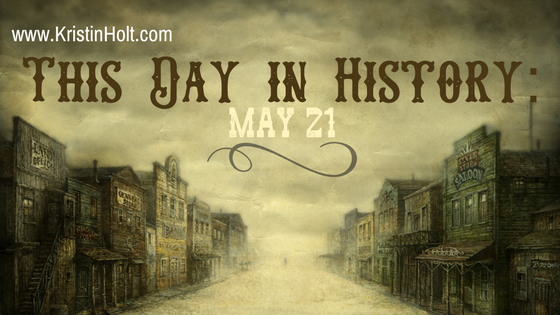
by Kristin Holt | May 21, 2017 | Articles
One hundred and thirty-seven years ago, today, was May 21, 1880. Three newspapers (two from Kansas and one from Louisiana) covered three timely subjects–two of which surprised me deeply. One–Leap Year–I knew about and had become comfortable with. But wait until you see the other two. Technology in 1880 was far more advanced than I realized…you might be equally surprised.

by Kristin Holt | Mar 6, 2017 | Articles
Really? Did Victorian Americans forbid kissing in public? Was it unreasonable to think the fictional town of Mountain Home, Colorado (the setting of The Gunsmith’s Bride (within GUNSMOKE & GINGHAM)) would have a “no kissing, no PDA” law? In 2017 U.S.A. it’s hard to believe Victorians would be so prudish as to object to public displays of affection–or a little peck. The newspaper articles, snippets from vintage magazines, and decorum advice from the era might leave you speechless… Oh! Read part of a scene where the law breaks up the hero and heroine (The Gunsmith’s Bride) kissing on the street–and threatens 48 hours in jail.

by Kristin Holt | Feb 15, 2017 | Articles
As with virtually all activities and behaviors in the Victorian Era, American society developed a set of etiquette rules governing bicycling. One might suppose this list is about signalling (hand gestures) or riding in pairs for protection. You might be quite surprised to see the lengthy list of do’s and dont’s [sic] offered up in a vintage newspaper article from 1895, and in various magazines of the day.

by Kristin Holt | Jan 9, 2017 | Articles
Pleasance. That’s an unusual name for a heroine… even for a story set in 1879. Where did it come from? Did you make it up?

by Kristin Holt | Dec 26, 2016 | Articles
This article contains the transcription of a brief recounting of one five-year-old boy’s letter to Santa Claus, published in Chicago Daily Tribune on December 26, 1883. The vintage newspaper report sheds light upon the attitudes and perceptions of our late Victorian-era ancestors, a young and well-to-do boy’s Christmas wish-list, and how his parents must have attempted to impress upon him an awareness of the good he might do for others. I find it interesting that residents of the Old Ladies’ Home are referred to as “inmates”.













